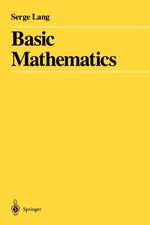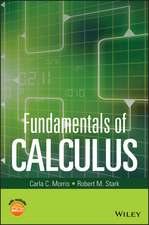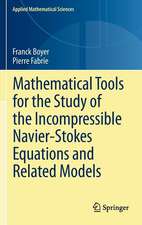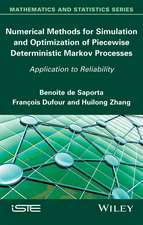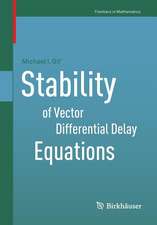Short Calculus: The Original Edition of “A First Course in Calculus”: Undergraduate Texts in Mathematics
Autor Serge Langen Limba Engleză Paperback – 29 noi 2001
"..Lang's present book is a source of interesting ideas and brilliant techniques." Acta Scientiarum Mathematicarum
"..It is an admirable straightforward introduction to calculus." Mathematika
This is a reprint of A First Course in Calculus, which has gone through five editions since the early sixties. It covers all the topics traditionally taught in the first-year calculus sequence in a brief and elementary fashion. As sociological and educational conditions have evolved in various ways over the past four decades, it has been found worthwhile to make the original edition available again. The audience consists of those taking the first calculus course, in high school or college. The approach is the one which was successful decades ago, involving clarity, and adjusted to a time when the students' background was not as substantial as it might be. We are now back to those times, so its time to start over again.
There are no epsilons-delta, but this does not imply that the book is not rigorous. Lang learned this attitude from Emil Artin, around 1950.
Din seria Undergraduate Texts in Mathematics
- 17%
 Preț: 362.13 lei
Preț: 362.13 lei - 17%
 Preț: 365.43 lei
Preț: 365.43 lei - 20%
 Preț: 466.84 lei
Preț: 466.84 lei - 17%
 Preț: 367.24 lei
Preț: 367.24 lei -
 Preț: 351.54 lei
Preț: 351.54 lei -
 Preț: 395.09 lei
Preț: 395.09 lei - 8%
 Preț: 384.89 lei
Preț: 384.89 lei -
 Preț: 306.96 lei
Preț: 306.96 lei -
 Preț: 380.27 lei
Preț: 380.27 lei -
 Preț: 400.43 lei
Preț: 400.43 lei -
 Preț: 358.11 lei
Preț: 358.11 lei -
 Preț: 372.27 lei
Preț: 372.27 lei -
 Preț: 400.43 lei
Preț: 400.43 lei -
 Preț: 364.41 lei
Preț: 364.41 lei - 17%
 Preț: 368.61 lei
Preț: 368.61 lei -
 Preț: 433.85 lei
Preț: 433.85 lei -
 Preț: 304.91 lei
Preț: 304.91 lei -
 Preț: 290.80 lei
Preț: 290.80 lei - 13%
 Preț: 389.61 lei
Preț: 389.61 lei - 17%
 Preț: 395.93 lei
Preț: 395.93 lei -
 Preț: 407.96 lei
Preț: 407.96 lei -
 Preț: 449.62 lei
Preț: 449.62 lei -
 Preț: 415.95 lei
Preț: 415.95 lei -
 Preț: 280.65 lei
Preț: 280.65 lei -
 Preț: 370.78 lei
Preț: 370.78 lei -
 Preț: 407.63 lei
Preț: 407.63 lei -
 Preț: 339.37 lei
Preț: 339.37 lei -
 Preț: 402.35 lei
Preț: 402.35 lei - 17%
 Preț: 373.60 lei
Preț: 373.60 lei -
 Preț: 398.78 lei
Preț: 398.78 lei -
 Preț: 440.01 lei
Preț: 440.01 lei -
 Preț: 424.14 lei
Preț: 424.14 lei - 17%
 Preț: 366.38 lei
Preț: 366.38 lei -
 Preț: 367.41 lei
Preț: 367.41 lei -
 Preț: 257.71 lei
Preț: 257.71 lei - 17%
 Preț: 362.67 lei
Preț: 362.67 lei - 15%
 Preț: 417.75 lei
Preț: 417.75 lei - 17%
 Preț: 366.40 lei
Preț: 366.40 lei - 19%
 Preț: 400.52 lei
Preț: 400.52 lei -
 Preț: 298.01 lei
Preț: 298.01 lei -
 Preț: 329.95 lei
Preț: 329.95 lei - 19%
 Preț: 492.83 lei
Preț: 492.83 lei -
 Preț: 396.24 lei
Preț: 396.24 lei -
 Preț: 390.08 lei
Preț: 390.08 lei
Preț: 387.10 lei
Nou
Puncte Express: 581
Preț estimativ în valută:
74.08€ • 80.44$ • 62.23£
74.08€ • 80.44$ • 62.23£
Carte tipărită la comandă
Livrare economică 22 aprilie-06 mai
Preluare comenzi: 021 569.72.76
Specificații
ISBN-13: 9780387953274
ISBN-10: 0387953272
Pagini: 260
Ilustrații: XII, 260 p.
Dimensiuni: 155 x 235 x 13 mm
Greutate: 0.4 kg
Ediția:Reprint of the 1st ed. Addison-Wesley, 1964.
Editura: Springer
Colecția Springer
Seria Undergraduate Texts in Mathematics
Locul publicării:New York, NY, United States
ISBN-10: 0387953272
Pagini: 260
Ilustrații: XII, 260 p.
Dimensiuni: 155 x 235 x 13 mm
Greutate: 0.4 kg
Ediția:Reprint of the 1st ed. Addison-Wesley, 1964.
Editura: Springer
Colecția Springer
Seria Undergraduate Texts in Mathematics
Locul publicării:New York, NY, United States
Public țintă
Lower undergraduateCuprins
I Numbers and Functions.- 1. Integers, rational numbers and real numbers.- 2. Inequalities.- 3. Functions.- 4. Powers.- II Graphs and Curves.- l. Coordinates.- 2. Graphs.- 3. The straight line.- 4. Distance between two points.- 5. Curves and equations.- 6. The circle.- 7. The parabola. Changes of coordinates.- 8. The hyperbola.- III The Derivative.- l. The slope of a curve.- 2. The derivative.- 3. Limits.- 4. Powers.- 5. Sums, products, and quotients.- 6. The chain rule.- 7. Rate of change.- IV Sine and Cosine.- l. The sine and cosine functions.- 2. The graphs.- 3. Addition formula.- 4. The derivatives.- 5. Two basic limits.- V The Mean Value Theorem.- 1. The maximum and minimum theorem.- 2. Existence of maxima and minima.- 3. The mean value theorem.- 4. Increasing and decreasing functions.- VI Sketching Curves.- 1. Behavior as x becomes very large.- 2. Curve sketching.- 3. Pol ar coordinates.- 4. Parametric curves.- VII Inverse Functions.- 1. Definition of inverse functions.- 2. Derivative of inverse functions.- 3. The arcsine.- 4. The arctangent.- VIII Exponents and Logarithms.- 1. The logarithm.- 2. The exponential function.- 3. The general exponential function.- 4. Order of magnitude.- 5. Some applications.- IX Integration.- 1. The indefinite integral.- 2. Continuous functions.- 3. Area.- 4. Upper and lower sums.- 5. The fundamental theorem.- 6. The basic properties.- X Properties of the Integral.- 1. Further connection with the derivative.- 2. Sums.- 3. Inequalities.- 4. Improper integrals.- XI Techniques of Integration.- 1. Substitution.- 2. Integration by parts.- 3. Trigonometric integrals.- 4. Partial fractions.- XII Some Substantial Exercises.- 1. An estimate for (n!)1/n.- 2. Stirling’s formula.- 3. Wallis’ product.- XIII Applications of Integration.- 1.Length of curves.- 2. Area in polar coordinates.- 3. Volumes of revolution.- 4. Work.- 5. Moments.- XIV Taylor’s Formula.- 1. Taylor’s formula.- 2. Estimate for the remainder.- 3. Trigonometric functions.- 4. Exponential function.- 5. Logarithm.- 6. The arctangent.- 7. The binomial expansion.- XV Series.- 1. Convergent series.- 2. Series with positive terms.- 3. The integral test.- 4. Absolute convergence.- 5. Power series.- 6. Differentiation and integration of power series.- Appendix 1. ? and ?.- 1. Least upper bound.- 2. Limits.- 3. Points of accumulation.- 4. Continuous functions.- Appendix 2. Physics and Mathematics.- Answers.- Supplementary Exercises.
Recenzii
From the reviews:
"...Lang's present book is a source of interesting ideas and brilliant techniques."
Acta Scientarium Mathematicarum
"... It is an admirable straightforward introduction to calculus."
Mathematika
"A First Course in Calculus went through five editions since the early sixties. Now the original edition of A First Course in Calculus is available again. The approach is the one that was successful decades ago, involving clarity and adjusted to a time when the students’ background was not as substantial as it might have been. … The audience is intended to consist of those taking the first calculus course, in high school or college." (G. Kirlinger, Internationale Mathematische Nachrichten, Vol. 57 (193), 2003)
"This is a reprint of the original edition of Lang’s A first course in calculus, which was first published in 1964. … The treatment is ‘as rigorous as any mathematician would wish it’ … . There are quite a lot of exercises … they are refreshingly simply stated, without any extraneous verbiage, and at times quite challenging. … There are answers to all the exercises set and some supplementary problems on each topic to tax even the most able." (Gerry Leversha, The Mathematical Gazette, Vol. 86 (507), 2002)
"...Lang's present book is a source of interesting ideas and brilliant techniques."
Acta Scientarium Mathematicarum
"... It is an admirable straightforward introduction to calculus."
Mathematika
"A First Course in Calculus went through five editions since the early sixties. Now the original edition of A First Course in Calculus is available again. The approach is the one that was successful decades ago, involving clarity and adjusted to a time when the students’ background was not as substantial as it might have been. … The audience is intended to consist of those taking the first calculus course, in high school or college." (G. Kirlinger, Internationale Mathematische Nachrichten, Vol. 57 (193), 2003)
"This is a reprint of the original edition of Lang’s A first course in calculus, which was first published in 1964. … The treatment is ‘as rigorous as any mathematician would wish it’ … . There are quite a lot of exercises … they are refreshingly simply stated, without any extraneous verbiage, and at times quite challenging. … There are answers to all the exercises set and some supplementary problems on each topic to tax even the most able." (Gerry Leversha, The Mathematical Gazette, Vol. 86 (507), 2002)
Textul de pe ultima copertă
This is a reprint of "A First Course in Calculus," which has gone through five editions since the early sixties. It covers all the topics traditionally taught in the first-year calculus sequence in a brief and elementary fashion. As sociological and educational conditions have evolved in various ways over the past four decades, it has been found worthwhile to make the original edition available again. The audience consists of those taking the first calculus course, in high school or college. The approach is the one which was successful decades ago, involving clarity, and adjusted to a time when the students'background was not as substantial as it might be. We are now back to those times, so it's time to start over again. There are no epsilon-deltas, but this does not imply that the book is not rigorous. Lang learned this attitude from Emil Artin, around 1950.
Caracteristici
Covers all of the topics traditionally taught in the first-year claculus sequence in a brief and elementary fashion

